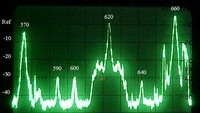Cable joins broadcasters in support of white spaces

One of the most contentious communications issues at the end of the Bush administration refuses to die. The issue is white spaces, the unused spectrum between digital broadcast signals whose proposed use has pitted some of the nation’s most powerful business interests against each other.
One of the last acts of Republican Kevin Martin’s Bush-era FCC was a wholesale rejection of broadcasters and wireless microphone proponents who had argued that unlicensed use of white spaces would lead to interference that could disrupt their signals. The FCC unanimously voted to allow the use of the spectrum for a new low-cost wireless Internet service.
Microsoft, Google, Dell, Hewlett-Packard, Intel, Philips, Earthlink and Samsung were successful in lobbying for opening the unused “white spaces.” After testing the devices, the FCC established a series of tight restrictions on the equipment but gave the go ahead for use of the white spaces for Internet service.
Broadcasters have continued to try to stop the use of the spectrum. Now, the cable industry has joined them.
In a new petition filed with the FCC, the National Cable and Telecommunications Association (NCTA) contends that unlicensed devices will cause interference to digital cable television reception. In addition, the cable trade group argued that cable modem Internet access and cable telephone service could also suffer.
The group cited new studies by Carl T. Jones, a consulting engineering firm, which found interference would be worse than originally predicted. Unlicensed portable wireless devices could cause interference to cable television reception up to 80ft away, the report said.
The NCTA argues that once the devices are unleashed, it will be virtually impossible to trace the source of interference. “After thousands or millions of these devices are sold and in service, there is no retroactive means of fixing widespread interference, should it occur,” the group told the FCC.
The professional video industry's #1 source for news, trends and product and tech information. Sign up below.
The group noted that a relatively small percentage of affected viewers moved Congress to delay the DTV transition. “Imagine the political backlash when cable TV viewers start complaining about their cable Internet connections slowing down and an ever increasing number of cable channels disappearing,” the group wrote.
While the NCTA has not asked the FCC to ban such devices, it does ask for changes in its rules to protect cable systems. These include reduced power levels for personal portable devices (50mW is recommended), increased separation for fixed devices or reduced power (400ft from buildings or a 1W power limit), restricting operation of fixed devices in some areas around cable TV headends, and allowing registration of headends in databases regardless of location.
A new FCC that will be headed by Julius Genachowski, a former technology adviser to the Obama presidential campaign, will hear the cable industry’s protests. His confirmation is not yet complete, and the current FCC is being temporarily headed by Michael Copps, who voted for use of white spaces for the devices.
Genachowski put together a detailed technology and innovation plan for the Obama campaign that expressed support for net neutrality protections, media-ownership rules that encourage more diversity and the expansion of affordable broadband access across the country.
He, and the other new members of the FCC to be appointed by the president, is expected to support strong Internet expansion. That makes the outcome of the cable industry’s late concern about “white spaces” a complete unknown as far as the commission is concerned.
